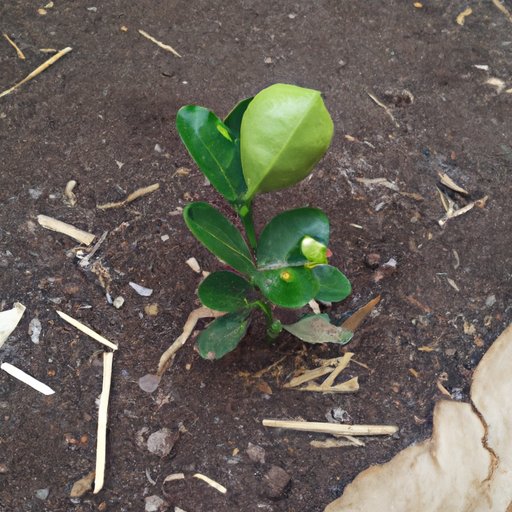
Overview of Lemon Tree Growth
Lemon trees are popular in both commercial and home gardens due to their fragrant flowers, attractive foliage, and delicious fruit. The size of a lemon tree depends on its variety, as well as environmental conditions, such as climate and soil quality. Generally, lemon trees range in size from 8 feet to 20 feet tall and 3 feet to 8 feet wide. It’s important to note that lemon trees do not grow evenly throughout the year, but rather have periods of seasonal growth.
Factors That Influence Lemon Tree Growth
There are several factors that can affect the growth of a lemon tree. These include soil quality, watering, fertilizing, and pruning. Soil is an important factor because it affects the availability of nutrients and water to the tree. Watering and fertilizing can also impact the growth of a lemon tree, as too much or too little of either can negatively affect the tree’s health. Pruning is another factor that can influence the size of a lemon tree, as it helps to control the shape and size of the tree.

How To Maximize the Size of a Lemon Tree
For those looking to maximize the size of their lemon tree, there are several steps they can take. The first step is to ensure that the soil has the right balance of nutrients and is well-draining. This can be achieved by adding organic matter and compost to the soil. Additionally, providing the tree with adequate water and fertilizer will help to promote healthy growth.
Pruning is also an important step in maximizing the size of a lemon tree. Proper pruning techniques can help to encourage new growth and keep the tree at a desired size. Summer pruning should be done when the tree is actively growing, and winter pruning should be done to remove dead or diseased branches and encourage new growth. Selective pruning can also be used to keep the tree at a desired size.
Benefits of Growing a Large Lemon Tree
Growing a large lemon tree has many benefits. One of the most obvious is increased yield of fruit. A larger tree produces more lemons than a smaller one, so if you’re looking to make the most of your lemon harvest, a larger tree is the way to go. Additionally, a larger tree can provide much needed shade and improve the aesthetics of the landscape.

Common Varieties of Lemon Trees and Their Maximum Sizes
When selecting a lemon tree, it’s important to choose the right variety for your garden. Some of the most common varieties of lemon trees include Meyer, Eureka, Lisbon, and Variegated Pink. Meyer lemon trees tend to be the smallest variety, reaching a maximum height of 10 feet and a width of 8 feet. Eureka lemons are slightly larger, reaching up to 15 feet tall and 10 feet wide. Lisbon lemons are the largest of the bunch, reaching up to 20 feet tall and 12 feet wide. Variegated pink lemons are a bit smaller, reaching heights of 12 feet and widths of 8 feet.
Pruning Techniques to Keep a Lemon Tree at a Desired Size
Once a lemon tree has reached its desired size, it’s important to maintain it through regular pruning. Selective pruning involves removing specific branches or leaves that are no longer needed. Summer pruning should focus on removing diseased or damaged branches, while winter pruning focuses on encouraging new growth. Pruning should always be done carefully to avoid damaging the tree.

Soil Requirements for Optimal Lemon Tree Growth
To ensure optimal growth of a lemon tree, it’s important to provide it with nutrient-rich soil. Adding organic matter and compost to the soil can help to improve the soil structure and provide essential nutrients. Additionally, the soil should be well-draining to ensure that the tree isn’t overwatered. If the soil doesn’t drain properly, it can cause root rot and other problems.
Challenges of Maintaining a Large Lemon Tree
Maintaining a large lemon tree can be challenging, as it requires regular maintenance and care. Large trees are more susceptible to disease and pest infestations, so it’s important to inspect the tree regularly for signs of trouble. Pruning large branches can also be difficult, as it requires special tools and techniques. Additionally, large trees require more water and fertilizer than smaller ones, so it’s important to stay on top of watering and fertilizing.
Overall, growing a large lemon tree can be rewarding and provide many benefits. With the right care and maintenance, it’s possible to enjoy the sweet smell of fragrant flowers and the taste of juicy lemons from your own backyard!
(Note: Is this article not meeting your expectations? Do you have knowledge or insights to share? Unlock new opportunities and expand your reach by joining our authors team. Click Registration to join us and share your expertise with our readers.)
